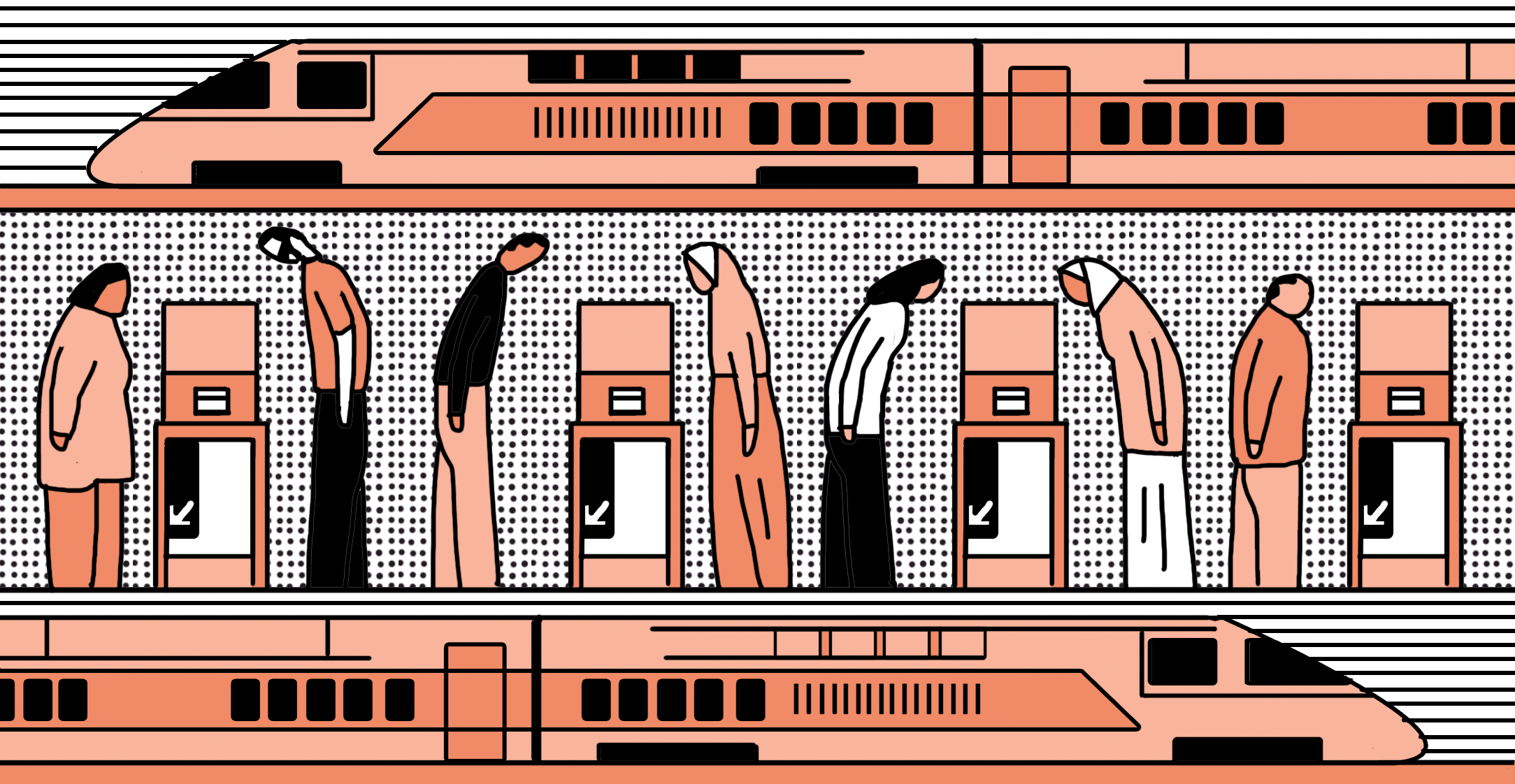This publication file is in the framework of the activities of the network of independant media on the Arab world. The regional cooperation is made by Al-Jumhuriya, Assafir Al Arabi, Mada Masr, Maghreb Emergent, Mashallah News, Nawaat, 7iber and Orient XXI.
In recent years, Egyptians have experienced a noticeable decline in their standard of living what with the devaluation of the national currency and at the same time a substantial rise in the cost of goods and services. Something quite unusual in a country where over the past few decades changes have always been gradual. Egyptians interpret their difficulties as a consequence of the implementation of the “Economic reform” aimed at bringing the country out of the current crisis with a series of austerity measures decided by the IMF.
Thus, while public expenditures are shrinking in those very areas which directly affect the lives of ordinary citizens, the government is spending more on infrastructure and construction projects which have not been the object of any broad concertation and which it is not clear why they should have been given such a priority. Nor do these expenditures contribute to improve the basic indicators which is the ostensible object of the reform program, first and foremost the external balances and the public debt, not to mention the reduction of the deficit which implies reducing costs and increasing revenues.
Making short shrift of the citizens’ legitimate right to know about decisions that have decisive effects on their lives even as they experience the negative consequences of the policies forced on them, and as their taxes are used for these mega-projects, the government did not even deign to make public the details of this structural adjustment program before it was implemented. Thus the reform plan was not published until it was well under way. And it was the IMF which was the first to disclose it in detail, the government having obtained parliamentary approval five months after the most important parts of the program had been launched.
The procedure was the same for adopting the gigantic projects which are absorbing the lion’s share of the country’s financial resources, even while their scarcity is stressed in the program of economic reform itself. There was not the slightest consultation or communication regarding their economic benefits, their possible contribution to increasing the national revenue, their added value potential. Nor were they shown to be tied in with the repayment of the debt or the progress of human development, all criteria which would make it possible to evaluate the wholesomeness of the government’s projects.
The program of “Economic reform”
Egypt began putting into practice the structural adjustment program as agreed with the IMF in November 2016. It extends over a period of three years and is supported with a loan of 12 billion dollars, payable in six instalments depending on the progress made in its implementation. Egypt has come three fourths of the way with only year remaining before the agreement comes to an end. The IMF’s successive reports show the Fund’s degree of satisfaction with the performance of the Egyptian economy. The government itself considers it has fulfilled its mission by achieving many of the program's goals, in particular an increased growth-rate, which was 4.3% before the program began and had reached 5.3% by the end of the last fiscal year in June 2018. The IMF expects the same rate for the current year with the “recovery of the tourist trade, an increase of natural gas production and continued market confidence thanks to the implementtion of the adjustment program” to quote the Fund’s report on world economic prospects published in October.
This policy has enabled the government to solve the problem posed by its currency shortage hanks to international loans on the one hand, currency devaluation and the deregulation of its exchange rate on the other. Thus the Central Bank was able to amass unprecedented levels of hard currency reserves (in two years they rose from 17.5 et 44 billion dollars). However the external debt rose by 58% and now amounts to 88 billion dollars according to the latest data available from the Central Bank.
As for the other expected sources of foreign currency, they had not developed as spectacularly as the government and other enthusiasts of flexible exchange rates for the Egyptian pound had promised, especially in terms of exports. These had of course improved, but the expected boom had not occurred. Direct investments had risen by 11% with the increased production of oil and gas. As for the tourist trade, in the first year it had not reacted to the devaluation as favourably as had been predicted, but last year it really did pick up again.
However, the big success achieved with the deregulation of the exchange rate, and which is regarded as one of the basic pillars of the “reform” was the massive arrival of investors on the Egyptian debt securities market: foreign investments in treasury bills and bonds amounted to 23 billion dollars last March, i.e. 500 million more than before deregulation.
Although they have provided the country with hard currency and allowed the government to obtain the equivalent in local currency, these capitals represent a burden for the State budget since to the value of those debt securities will be added after a time the interests which the public purse will have to bear, in addition to the burden of the current debts and their service. Today, according to the latest figures available last March, the Egyptian internal debt amounts to 3.5 trillion Egyptian pounds, representing an increase of 35% since the “reform” was launched.
The service of the debt swallows up 40% of the State’s public expenditures, which is more than the total civil service payroll, the subsidies and investments.
Aside from the burden on the budget which they represent, those foreign investments in debt securities are by nature highly sensitive to fluctuations on the world markets and in the opinion of many economists constitute a real danger: they are a form of investment which arrive easily enough but may be withdrawn just as suddenly. This is what happened in the last few months with the rise in US interest rates and the extreme commercial and political volatility across the world, which brought about the flight of those capitals from emergent countries. In Egypt , six million dollars in those securities portfolios fled the country between last April and July, the equivalent of almost one quarter of all the investments in securities.
The fact that the government counted on those investments which it had deliberately attracted places it in a critical situation.
It finds itself obliged to assign even higher rates of interest to those securities in order to attract once again the investors who are withdrawing from emergent countries. It is important to realize that for an increase of 1% in the rate of interest on a given security, the service to the corresponding debt increases by 4 to 5 billion Egyptian pounds.
The deficit and the reduction of expenditures
The chief objective of these economic reforms, in the case of Egypt and most of the other experiments conducted with the IMF, remains the reduction of the budget deficit. The usual way to achieve this is through a drastic reduction of public expenditures while at the same time ways are sought to increase receipts.
Egypt committed itself to implementing a number of decisions designed to reduce expenditures and hence the budgetary deficit. Over the last two years the social subsidies have dwindled: fuel, electricity and water but also public transport such as the Cairo underground. Despite the brutal impact of the shrinking of these subsidies on the cost of living for ordinary citizens, the goal remains difficult to achieve. Every few months the government has to revise, in conjunction with the IMF, the ideal level of the budget deficit in relation to the GDP, either because the price of oil has risen, on which Egypt is so dependent, or because of the increasing burden of the debt and its interests.
Thus ordinary citizens are fated to put up with these ever-rising prices, the end of public subsidies and the State’s incapacity to increase their income. The idea is to ensure a balance between the economic indicators but it is hard to see how this could be achieved without profound modifications in the economic structure which the “reform” program never mentions.
Economists who criticize this method, as well as human rights advocates, challenge the ability of this so-called reform to get the economy out of its morass. To what extent, they wonder, is it capable of inducing changes in the structure and management of the economy likely to bring about any sustainable development and guarantee a fair apportioning of the advantages and disadvantages, instead of obliging the majority of the population to support the full weight of the reform with no rewards whatsoever while just a few players avoid the costs and make a pile for themselves.
Consumers began to realize they were the losers in September 2016 with the introduction of VAT, replacing the previous sales tax. VAT raised the percentage levied on consumer goods at the same time as it extended the range of excisable goods and services.
Another measure followed in November of that same year: the deregulation of the exchange rate of the Egyptian pound, which divided its value in half and reduced by as much the purchasing power of the average Egyptian. This decision was a condition of the final agreement on the IMF loan: the first instalment was paid the week following the currency deregulation. That very evening, the government raised the price of fuels, in proportions that varied from 30% to 80%.
In the wake of these decisions, a terrible wave of price-increases swept the country, with prices peaking at a record high, + 30,7 % on the average in the course of 2017, the year that followed the currency deregulation. This year the rate of inflation fell to 11.5 % of last year’s rate, but is again tending to rise with the June hike in the price of fuel and electricity. In its report on prospects for the world economy, the FMI expects the rate for this year to be around 21%.
However the drop in the rate of inflation brought no improvement in the living standards of the population, since prices continued to clilmb, albeit more slowly, and wages remained unchanged. Some employers even cut wages to reduce their expenses when the price rises occurred, affecting all goods and services, and consequently their production costs.
Thus it is the ordinary citizen and not the State or the investors who is bearing the brunt of most of these costs and these policies, whether they are aimed at cutting expenditures or increasing receipts. The IMF has insisted on the need to widen the fiscal base to include the highest income bracket, and deplored in documents monitoring the economic program the steady decline of corporate tax revenues over the past decade. Yet the fact remains that in the end it was the IMF that allowed the government to give up its plans to tax the highest revenues and official transactions which it had begun to apply. On the other hand the Fund stepped up its pressure to eliminate delays in VAT collection, when this purely restitutive tax is paid by consumers who make no profit.
In July 2016 (the year when this economic program began), the Egyptian government decided to lower the rate of taxation on the highest income bracket from 25% to 22.5% for those whose income was higher than one million Egyptian pounds per year. At the same time it did away with the 10% tax on capital gains.
What is the role of the mega projects in the “reform”?
At the same time as it strives to reduce public expenditures, re-route the sums previously allotted to subsidies in order to pay off the deficit, repay the accumulated debts and their interests, all of which prevents the State from developing vital public services in the areas of health and education, we hear of plans for mega construction projects which will cost billions of pounds. It is claimed that these will open prospects for the future, but the government never provides any clear explanations of their economic opportunity. Nor how they are going to further sustainable development, nor how they are compatible with the austerity policies imposed on the population.
Egypt signed with the IMF for a loan of 12 billion dollars. It has managed to collect another twelve billion from friendly countries and credit agencies. It was able to place foreign currency denominated debt issues on the world markets. All of this to fill a huge gap in its finances. And lo and behold at the very same time this government plunges into preparations for building a new administrative capital at a cost which those in charge of the project evaluate at nearly 45 billion dollars (800 billion Egyptian pounds at the current exchange rate).
Aside from a few propaganda talks in the media, none of these projects has been the object of a large debate on their desirability nor on the priority granted them in an economy committed to austerity and indebtedness, an economy struggling to regain its stability after a period of great political uncertainty.
The president of the company set up by the government to build this new administrative capital has announced that the first stage of the project will cost 300 billion dollars and will be finished in three years.
If that kind of money is available for what was originally a housing project and has taken on the proportions of a city, why are those funds not used for more urgent projects which are in desperate need of financing and which could boost sectors of the real economy or generate solid profitability, contrary to these huge sunk investments? Why not try to lighten the burden of the economic crisis on ordinary citizens and respond to the pressing needs of the education and health sectors, deteriorating day after day as the funds devoted to them are shrinking year after year?
This project is increasingly challenged in the rare spaces where free speech is still tolerated, such as the social networks. Those in charge never miss an opportunity to repeat that the administrative capital will not be financed by the State, in order to make these challenges appear irrelevant.
And yet 51% of the Company in charge of the project is owned by the armed forces and 49% by the Organisation of urban communities, both of which are emanations of the State. Even though anything related to the armed forces is shrouded in secrecy and remains impenetrable, the fact is that in the last analysis we are talking about pubic money.
But the new administrative capital is not the only project at hand.
The government is also preparing to build a residential and recreational town, the first stage of which will cost 50 billion Egyptian pounds and which will also include governmental residences and the presidential palace. It will house the Government headquarters during the summer months.
The government program presented to Parliament last summer includes plans for 16 new towns. The priority given these building projects seems hard to justify. It appears to be banking on the building trade to spark the economy and provide jobs for workers, ignoring the possibility of creating better jobs in other more profitable sectors of the economy which offer real prospects of development.
To provide transport for these new towns, the government is studying plans for a high-speed railway 498 km. long, between Ain Sokhna and Alamein, connecting the new administrative capital to 6th of October City and to Alexandria, at a cost of 1.2 billion dollars (nearly 28.5 billion pounds) to be financed by a
soft loan from China.
The paradox of the principles underlying these public policies is that at the same time as the government is adopting plans for this TGV to serve the new future towns, it refuses to take on the cost of a public service like the Cairo underground, where the price of a ticket has gone up twice in one year and is likely to go up again soon. The pretext for this refusal is the underground’s 600 pound deficit, although in fact the system is quite profitable. This is merely an attempt to make the people pay for investments linked to the extension of the underground inside Cairo, which in no way corresponds to the actual needs of the population. The underground as it is constitutes a safe, rapid and reasonably priced means of transport in an environment where everything is increasingly expensive. But the population is being made to pay the cost of a “reform” which only benefits the corporations, the banks and local and international creditors.
____________________
Maye Kabil
Economy Editor at Mada Masr. Worked in economic journalism in Egypt for ten years in different publications and electronic newspapers, including Al-Shorouk and Aswat Masriya.





